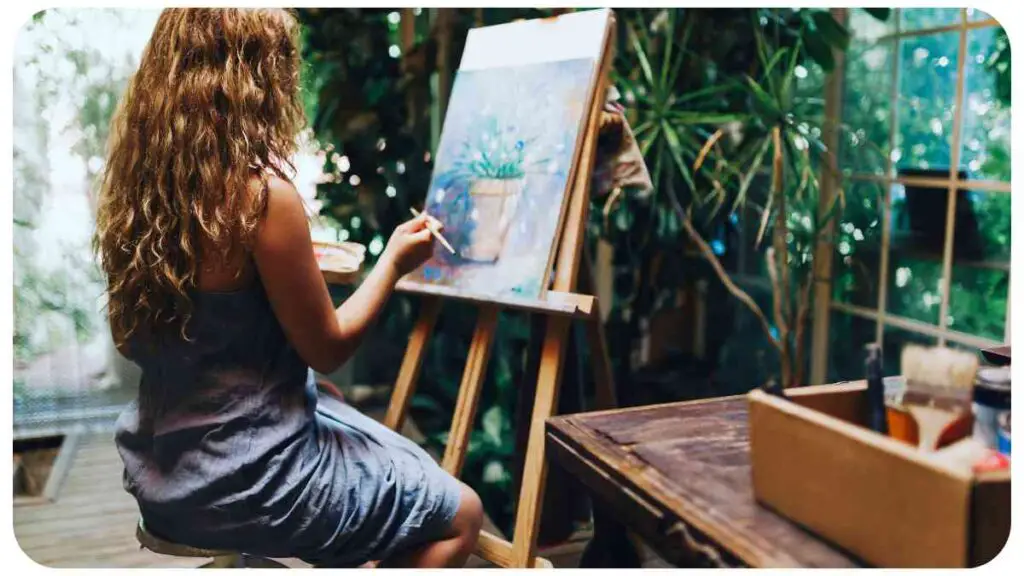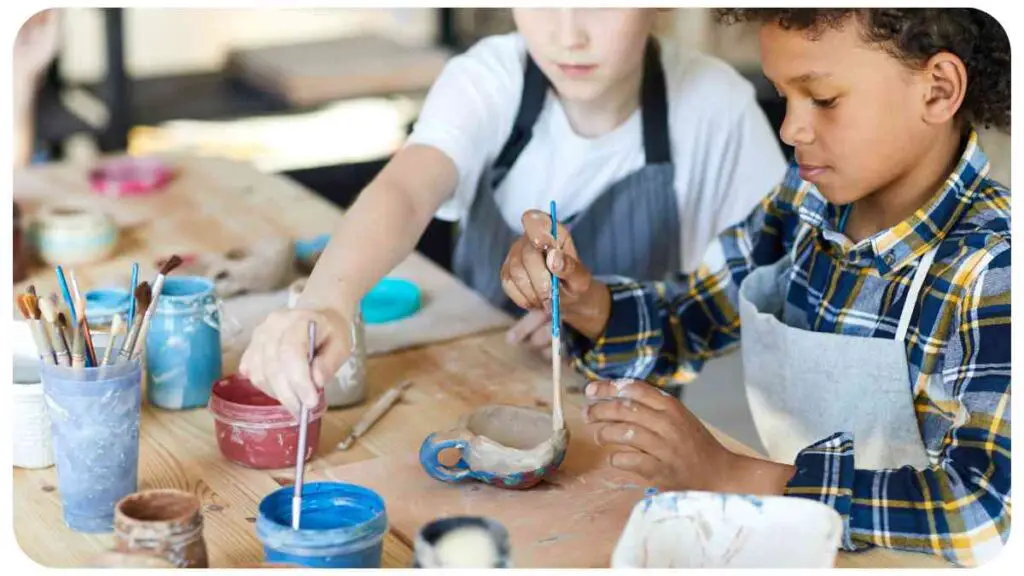Welcome to this comprehensive guide on how to use non-toxic paints. In this article, we will delve into the benefits of non-toxic paints, explore the different types available, provide insights on choosing the right paint for your project, discuss surface preparation techniques, and offer tips on priming and painting.
Additionally, we will cover information on the tools and equipment you’ll need, proper cleaning and disposal methods, and address some common questions. Let’s get started on this journey towards a safer and healthier painting experience!
| Takeaways |
|---|
| – Non-toxic paints provide a safer and healthier alternative to traditional paints. |
| – They have lower volatile organic compound (VOC) content, reducing air pollution and health risks. |
| – Non-toxic paints are available in a wide range of colors and finishes. |
| – Proper surface preparation and application techniques ensure optimal results with non-toxic paints. |
| – Non-toxic paints can be used on various surfaces and are safe for children, pets, and the environment. |
Benefits of Non-Toxic Paints
Non-toxic paints offer numerous benefits that go beyond just adding color to your walls. They are formulated to minimize the presence of volatile organic compounds (VOCs), which are harmful chemicals commonly found in traditional paints.
By using non-toxic paints, you not only reduce the risk of exposing yourself and your loved ones to harmful toxins but also contribute to a healthier environment. Non-toxic paints are especially beneficial for individuals with respiratory issues, allergies, or sensitivities to chemical fumes.
“Enhance your card-making skills with our comprehensive tips and tricks guide.” Check out our guide on card making tips and tricks for expert advice and inspiration.
Understanding VOCs in Paints
Volatile Organic Compounds (VOCs) are chemicals that easily evaporate at room temperature, releasing potentially harmful gases into the air. These compounds are commonly found in conventional paints, causing a strong odor and adverse health effects when inhaled.
Non-toxic paints, on the other hand, contain significantly lower levels of VOCs or are completely VOC-free. When selecting non-toxic paints, it is essential to look for certifications and labels that attest to their low-VOC or VOC-free nature.
| Brand Name | VOC Level |
| EcoColor | 0 g/L |
| PureGreen | 5 g/L |
| SafeCoat | 10 g/L |
| Nature’sGlow | 15 g/L |
Types of Non-Toxic Paints
Non-toxic paints come in various formulations to suit different surfaces and purposes. Some common types include:
- Latex Paints: Latex paints are water-based and often the go-to choice for interior walls. They are low in VOCs, easy to clean up, and offer a quick drying time.
- Milk Paints: Milk paints are made from natural ingredients, such as milk protein, lime, and pigments. They are a popular choice for furniture or crafts and provide a unique, vintage appearance.
- Clay and Chalk Paints: Clay and chalk paints are environmentally friendly options that create a matte, textured finish. They adhere well to various surfaces and are ideal for achieving a rustic or shabby-chic look.
- Natural Oil Paints: Natural oil paints are derived from plant oils, such as linseed or citrus oil. They offer excellent coverage, durability, and are often preferred for trim, doors, and windows.
| Type of Paint | Ideal Use |
| Latex Paints | Interior walls |
| Milk Paints | Furniture, crafts |
| Clay/Chalk | Textured, rustic finish |
| Natural Oils | Trim, doors, windows |
Choosing the Right Non-Toxic Paint

Selecting the right non-toxic paint for your project is crucial to achieve the desired results and ensure its longevity. Consider the following factors when making your decision:
- Color and Finish: Determine the color palette and finish (matte, satin, gloss) that best complements your space and personal style.
- Surface Compatibility: Different paints work better on certain surfaces. Check the paint labels for recommendations and choose one that adheres well to your surface type.
- Durability and Washability: Depending on the area to be painted, consider paints that provide durability and washability in high-traffic or moisture-prone areas.
- Brand Reputation: Opt for brands that are known for their commitment to non-toxic formulations and have positive reviews from users.
By taking these factors into account, you can make an informed decision when selecting non-toxic paints.
“Expand your bead collection and master different beading techniques with our guide.” Learn about different types of beads and their uses in this informative resource for craft enthusiasts.
Preparing the Surface
Before applying non-toxic paint, it is crucial to prepare the surface to ensure proper adhesion and a smooth, long-lasting finish.
- Clean the Surface: Remove any dirt, grease, or loose particles from the surface to be painted. Use a mild detergent solution and a sponge or cloth to clean the area thoroughly. Rinse with clean water and allow it to dry completely.
- Repair Imperfections: Inspect the surface for cracks, holes, or imperfections. Use a patching compound or spackling paste to fill in any gaps and sand it down once dry to achieve a smooth surface.
- Sand and Smooth: If the surface has an existing glossy finish or uneven texture, lightly sand it to create a rough surface. This will help the paint adhere better. Use a fine-grit sandpaper and wipe away any dust before proceeding.
- Protect Surrounding Areas: Cover adjacent surfaces, furniture, or flooring with drop cloths or painter’s tape to prevent accidental paint spills or drips.
Priming and Painting Techniques
Proper priming is essential to enhance paint adhesion and create a consistent base for your non-toxic paint. Follow these techniques for optimal results:
- Choose a Non-Toxic Primer: Select a non-toxic primer that is compatible with the type of paint you are using and suitable for your surface. Apply it evenly using a brush or roller, following the manufacturer’s instructions. Allow the primer to dry completely before proceeding.
- Stir and Strain the Paint: Before painting, thoroughly stir your non-toxic paint to ensure consistent color and texture. If necessary, strain the paint to remove any lumps or impurities.
- Cut in and Edges: Use a high-quality brush to cut in along the edges and corners before painting the larger areas. This ensures a clean and precise finish.
- Apply Multiple Thin Coats: Rather than applying a single thick coat, it is better to apply multiple thin coats of non-toxic paint. This allows for better adhesion, reduces drying time, and provides a more even finish.
- Maintain Proper Drying Time: Allow the paint to dry for the recommended time between coats to achieve optimal results. Ensure adequate ventilation in the room during the drying process.
- Clean-Up: Clean brushes and rollers immediately after use by rinsing them with warm, soapy water. For oil-based paints, use appropriate solvents as recommended by the manufacturer.
“Dive into the history of acrylic paint and explore its evolution across time.” Discover the fascinating story behind acrylic paint’s evolution and its relevance to contemporary art.
Tools and Equipment Needed

To successfully use non-toxic paints, gather the following tools and equipment before starting your painting project:
- Paint Brushes and Rollers: Choose brushes and rollers suitable for the type of paint and the surface you are painting. Opt for high-quality brushes to achieve a smooth finish.
- Drop Cloths and Painter’s Tape: Protect floors, furniture, and other areas from accidental paint spills or splatters with durable drop cloths and painter’s tape.
- Primer: Select a non-toxic primer that is compatible with your paint type and surface. Ensure you have enough to cover the necessary areas.
- Paint Trays: Use paint trays for easy access and even distribution of the non-toxic paint. Disposable liners can help with quick cleanup.
- Sandpaper and Sanding Block: Have a variety of sandpaper grits and a sanding block on hand for surface preparation and smoothing out imperfections.
- Cleaning Supplies: Keep warm, soapy water and clean rags or sponges nearby for cleaning brushes, tools, and any accidental spills.
“Unleash your creativity with pottery and our beginner-friendly tips and tricks.” Start your pottery journey with our comprehensive DIY pottery guide for valuable insights and techniques.
Cleaning and Disposal of Non-Toxic Paints

Proper cleaning and disposal of non-toxic paints are essential for maintaining a safe and eco-friendly painting experience.
- Clean-Up: After completing your painting project, clean your brushes, rollers, and other painting tools with warm, soapy water. Rinse them thoroughly until the water runs clear. Ensure paint residues are properly removed.
- Storage: If there is any leftover non-toxic paint, store it in a tightly sealed container in a cool and dry location. Check the paint label for specific storage instructions and shelf life.
- Safe Disposal: Consult local regulations regarding the disposal of non-toxic paints. In some areas, you may be able to dispose of small quantities with regular household waste. However, larger amounts may require special disposal methods. Contact your local waste management facility to verify the appropriate disposal procedures.
“Overcome sewing machine issues with our step-by-step troubleshooting guide.” Learn how to troubleshoot your sewing machine effectively using our comprehensive step-by-step guide for smooth crafting sessions.
Conclusion
Using non-toxic paints is not only beneficial for your health but also contributes to a safer and more eco-friendly living environment. By understanding the importance of low-VOC paints, selecting the right non-toxic paint for your project, and following proper surface preparation and painting techniques, you can achieve beautiful and long-lasting results.
Remember to prioritize safety by wearing appropriate protective gear, ensuring proper ventilation during painting, and following the manufacturer’s instructions for cleanup and disposal of non-toxic paints. By taking these steps, you can enjoy the beauty of freshly painted walls while minimizing the negative impact on your health and the environment.
Now that you have a comprehensive understanding of how to use non-toxic paints, you can confidently embark on your painting projects with the knowledge and tools necessary for a successful and toxin-free experience. Happy painting!
Further Reading
Here are some additional resources to further expand your knowledge on non-toxic paints:
The Ultimate Guide to Non-Toxic Paint: This blog post provides a comprehensive guide to non-toxic paints, covering everything from their benefits to application techniques and product recommendations.
A Guide to Non-Toxic Paints: This helpful guide from Eartheasy provides insights into the different types of non-toxic paints available, their benefits, and tips on choosing the right paint for your project.
The Ultimate Guide to Toxic Paints for Environmentally Friendly Painting: This guide explores the negative impacts of toxic paints and offers alternatives, including non-toxic paint options, for environmentally friendly painting.
FAQs
Here are some frequently asked questions about non-toxic paints:
Q: Are non-toxic paints safe for use around children and pets?
A: Yes, non-toxic paints are generally safe for use around children and pets as they contain fewer harmful chemicals. However, it’s important to allow the paint to fully dry and the fumes to dissipate before allowing children or pets into freshly painted areas.
Q: Can non-toxic paints be used on all surfaces?
A: Non-toxic paints can be used on a variety of surfaces, including walls, furniture, and crafts. However, it’s important to check the paint label to ensure compatibility with the specific surface you plan to paint.
Q: Do non-toxic paints have a strong odor?
A: Non-toxic paints generally have a lower odor compared to traditional paints due to their reduced VOC content. However, some natural ingredients or pigments used in non-toxic paints may still emit a mild odor.
Q: How do I properly clean non-toxic paint brushes and tools?
A: Non-toxic paint brushes and tools can be cleaned using warm, soapy water. Rinse them thoroughly until the water runs clear, and allow them to air dry or pat them dry with a clean cloth.
Q: Can I mix different colors of non-toxic paints?
A: Yes, you can mix different colors of non-toxic paints to create custom shades. Follow the manufacturer’s guidelines for proper mixing techniques and ratios.

Hellen James is the creator of Unified Crafts and has been crafting since she was a kid accompanied by her mom to the craft store, where she was free to choose whatever ignited her imagination.

